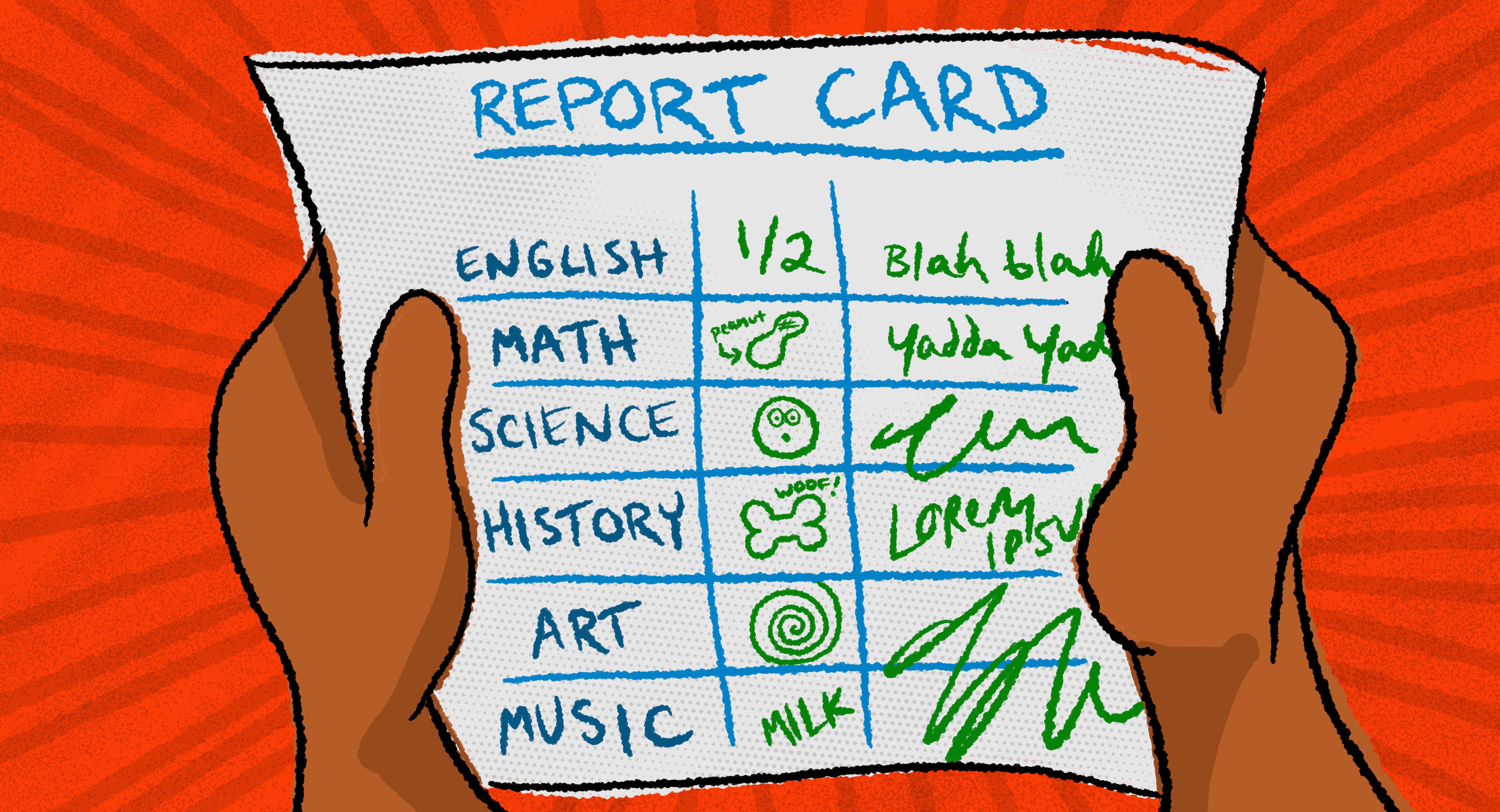
Letter grades on report cards are synonymous with school—for folks of a certain age, the two are inseparable. But for a decade now, researchers, educators, and some parents have been critical of not only letter grades but grading as a whole. Are grades all they’re cracked up to be?
Grades matter for college
A high GPA is a must for landing acceptance to top-tier colleges (and funding four+ years of study through scholarships, grants, and loans).Counterpoint one is pretty obvious—what about students with no plans to attend college, who are instead aiming for trade programs and career paths? If they’re not boosting a GPA for admission purposes, is there any incentive for this sizable student population to try harder, lose a few hours of sleep, and strive for a few more percentage points?
Even for intended students, grades don’t determine your worth, but they do matter. Grades help measure your progress toward your full potential. That motivation can set students on the path to grading success, even if their postsecondary goals don’t involve academics. On the contrary, grades focused on strengths and areas needing improvement may also help prepare for a career's worth of performance reviews.
Rewarding intrinsic vs. extrinsic motivation
Speaking of motivation—when working toward a grade, are students practicing obedience or are they demonstrating the outcomes of an active and deliberate desire to learn? Which mindset offers lifelong benefits?A little of column A, a little of column B, until the scales begin to skew too much. The reward of extrinsic motivation helps light the flame of intrinsic motivation—with a little practice, students can take over from there and work for the sake of expanding their knowledge and horizons, not just for the free waterpark admission on “A” day (RIP Riverview Park & Waterworld in Wisconsin Dells, Wis.).
Two takes on grade inflation
Grade inflation, or the artificial raising of grades, is a broad concern ranging from grading methods like pass/fail courses to revising work and lengthening deadlines. As is the case with most of education, there are two main claims up for debate:Grade Inflation is a big deal!!
Among other stakeholders, ACT has discovered evidence of grade inflation as it compared longitudinal scores. As student ACT scores dropped over time, their GPAs rose. Calling grade inflation “real” and “systemic,” the organization warned against the value of student transcripts as a measure of college-bound students’ capabilities. Instead, they recommend relying on multiple measures including an objective test for college admission.Culturally grade inflation or indeed suppression also draws whispers and groans. Who among us hasn't experienced the hushed celebration of getting the "easy" grader vs. the tough grading teacher?
Eh, grading is simply evolving.
Others take a more neutral approach to recent rising grades, citing the uncertainty of pandemic-era school and the quick changes that ensued. Undaunted, proponents of grade evolution also take aim at the way grades end up a comparison of students. Timothy Quinn, chief academic officer and author, puts it this way to EdSurge: “Everyone wants their students to do really well, and schools will say they want to help all students. But then people will say, ‘Oh, but some of them should be getting D’s.’” (Should they? It’s all a matter of perspective.)At the very least we can agree, grading is nuanced. What about the risks? Also nuanced.
Side effects for students
As adults have spent the better part of a decade deciding how to improve grading, researchers have studied its effects, in particular the risk overall to student mental health.Now, before the bold and hardy among us begin to protest about how just about everything these days threatens mental health, take a moment to consider the University of Michigan study that found 80% of students placed their self-worth on grades. Yes, the very same grades that experts aren’t even certain are an accurate measurement of learning. Consider further that the study is from 2002, long before social media and its constant comparisons reared its ugly mug and burrowed into students’ heads.
And if building a lifelong inferiority complex in adolescents wasn’t enough, there’s a good chance students aren’t even retaining the knowledge they’re striving so hard to prove for a letter grade. In a study of 24,000 student from 70 high schools, over half (64%) admitted to cheating. Unfortunately, as schools move to virtual learning when faced with illnesses and staff shortages, cheating has become even more widespread.
Grades provide a source of friction for the trifecta of students, teachers, and parents. Parents know the importance of a stellar transcript for their students' futures. Students and teachers both feel the pressure of that knowledge in different ways. At its most noxious, parents may unfortunately place greater emphasis on GPA over learning.
Grades are flawed.
Very few, if any, education experts are completely satisfied with traditional grading, and at the end of the day, we all want students have a better, more enriching experience and become lifelong learners—whatever form that takes.The key source of friction is this: What are grades actually measuring? Is it the depth of understanding, or is the ability to memorize, follow instructions, or jump through hoops? Instead of using methods limited to rote strategies, how do schools assess learning in a way that’s fair, scalable, and produces measurable data?
A non-exhaustive list of out-of-the-box grading ideas does look like extra work. But when we think of the value it brings to truly give meaningful, actionable feedback to students, the work to change an outdated system starts to feel less daunting.
What if we measured:
- A student’s capability to think?
- Mastery of individual concepts? (Ahem, standards-based grading, anyone?)
- Demonstration of understanding?
- Project-based learning?
- Decaying average?
- Effort?
- Iterations?
How simple can we make grading, anyway?
Simpler isn’t always better, but so, so often overcomplication ruins the entire process. Whatever the grade structure your leadership team chooses, the celebration of student growth will continue to march on (whether it’s made of letters, averages, high fives, smiles, or just sighs of relief from beleaguered graduates and their teachers).Determine a benchmark. Make some progress. Report the findings. Measure the distance from benchmark to today. Repeat.
Grow.
Follow-up resource: Machines change the way we work
Consider: Do we do our best work for machines? Let's explore that question.WHAT'S NEXT FOR YOUR EDTECH? The right combo of tools & support retains staff and serves students better. We'd love to help. Visit skyward.com/get-started to learn more.

|
Erin Werra Blogger, Researcher, and Edvocate |
Erin Werra is a content writer and strategist at Skyward’s Advancing K12 blog. Her writing about K12 edtech, data, security, social-emotional learning, and leadership has appeared in THE Journal, District Administration, eSchool News, and more. She enjoys puzzling over details to make K12 edtech info accessible for all. Outside of edtech, she’s waxing poetic about motherhood, personality traits, and self-growth.




